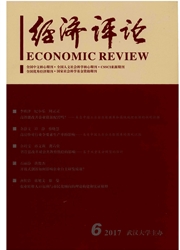

 中文摘要:
中文摘要:
中小企业融资贵问题一直是中国经济急需解决的重大问题。近年来政府采取了多项应对措施,其中货币政策一直是各界关注的焦点。本文采用银行信贷市场和民间借贷市场两类中小企业主要融资市场的实际利率衡量中小企业的实际融资成本,并构建OLS回归模型,分析货币政策对中小企业实际融资成本的影响,以此判断货币政策是否能解决中小企业融资贵问题。研究结果表明,央行无论通过释放流动性等数量型调控工具,还是降低贷款基准利率等价格型调控工具,都不能显著地降低中小企业的实际融资成本。因此,未来货币政策不应将解决融资贵作为主要目标,而应将政策重点继续集中于稳定物价水平和经济增速,融资贵问题从根本上还需要通过纠正经济和金融体制扭曲来解决。
 英文摘要:
英文摘要:
In recent years, the government has taken a number of measures to deal with small and medium-sized firms' financing problems, in which monetary policy has been the focus of attention. In this paper, the actual financing cost of small and medium-sized enterprises (SME) is measured by the real interest rate of the two types of main financing market of SME, and the OLS regression model is constructed to analyze the effect of monetary policy on the actual financing cost of SME, so as to judge whether monetary policy can solve the SME' s financing problems. The results show that the central bank can not significantly reduce the actual financing cost of SME, whether by releasing liquidity or lowering benchmark interest rate. Therefore, solving SME' s financing problems should not be the main objective of monetary policy, which fundamentally relies on changing the distortion of financial system. Monetary policy should continue to focus on stabilizing the price level and economic growth.
 同期刊论文项目
同期刊论文项目
 同项目期刊论文
同项目期刊论文
 期刊信息
期刊信息
